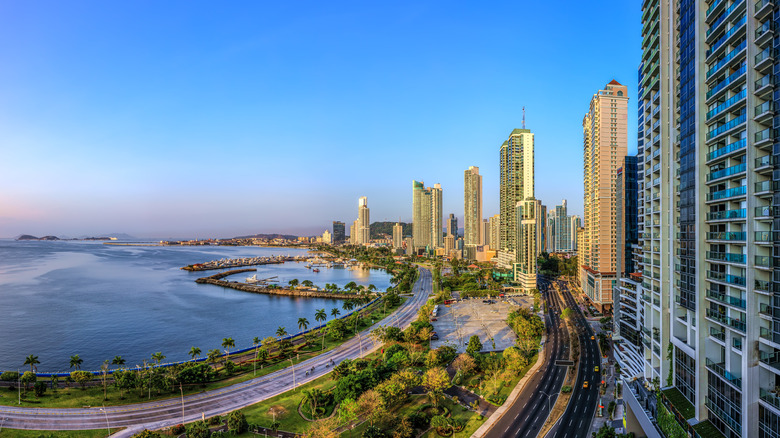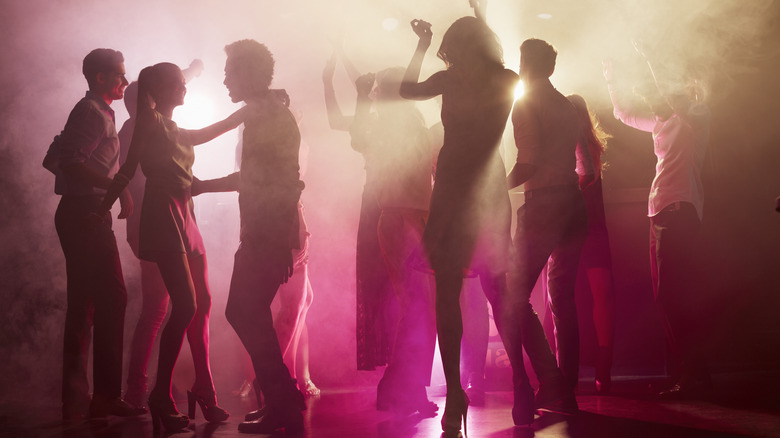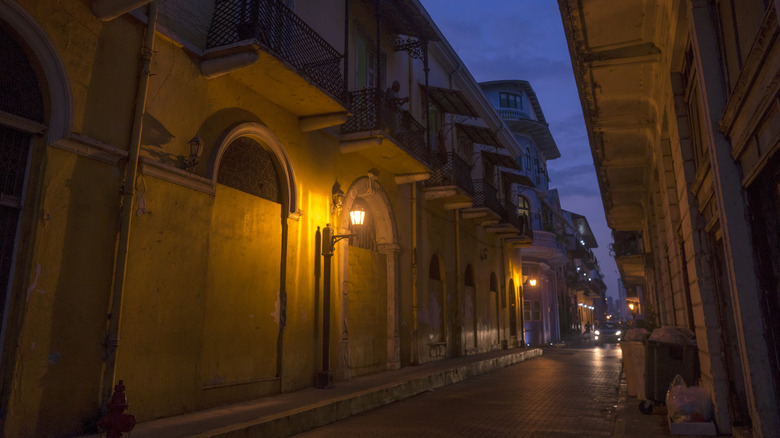The Birthplace Of Reggaeton Is A Breathtaking Tropical Destination (And It Isn't Jamaica)
If there's one sound that defines the music of the 2010s and the 2020s, it is the unmistakable boom-ch-boom-ch-boom beat of reggaeton. Most of the biggest artists in the world have dabbled in the genre at one time or another, and its influence cannot be understated. From pure reggaeton musicians like J Balvin to world-famous stars like Jennifer Lopez and Shakira, the beat is everywhere.
Most people don't know the origins of reggaeton, mistakenly assuming it comes from the same Jamaican roots as pure reggae. But while the music owes a lot to Jamaican and West Indian styles like dancehall, soca, and calypso, reggaeton itself, as a distinctive musical form, is a very separate affair.
Aficionados often trace its roots as far as the amazing holiday destination of Puerto Rico, home of some of the biggest reggaeton artists like Bad Bunny and Daddy Yankee. But even this doesn't tell the whole story. Reggaeton might have come of age in the barrios of San Juan, but the real birthplace of the movement is the Central American tropical paradise of Panama.
West Indian grooves shaped by Latin American culture
When the Panama Canal was under construction, thousands of West Indian workers emigrated from Jamaica and Barbados to help build it. In the '70s and '80s, their descendants living in Panama City began to translate classic reggae and dancehall songs into Spanish, as well as blending them with more traditional Latin American rhythms like cumbia. This combination became what we know today as reggaeton.
While reggaeton certainly owes its popularity to Puerto Rican nightclubs like The Noise and artists like DJ Negro and Ivy Queen, it was created, formed, and developed in Panama City. In fact, the inescapable, pervasive dembow beat that drives all reggaeton music gets its name from a Panamanian musician. Widely considered to be one of the originators of the movement, Nando Boom wrote Ellos Benia (Dem Bow) using the original by Shabba Ranks as a foundation; the song became one of the most popular first-wave reggaeton hits.
These days, reggaeton is everywhere, played by artists all over the world. From Daddy Yankee's "Gasolina" in 2004 to Luis Fonsi's "Despacito" in 2017, reggaeton has spawned global hits aplenty. Globally renowned artists like Beyoncé, Madonna, and Nicki Minaj have collaborated with the genre's biggest stars, and it now has its own category at various music award shows, including the Latin Grammy Awards and the Billboard Latin Music Awards. But despite its global fame and appeal, if you really want to get to grips with the infectious rhythms of reggaeton, you need to visit Panama and Panama City.
Pumping nightlife and the pinnacle of the Age of Engineering
Panama City is a great place to start for fans of reggaeton and of Latin culture. This underrated Caribbean destination combines a charming historic center with an effortlessly modern atmosphere and has an absolutely incredible nightlife and music scene. While the historic walled city of Casco Antiguo (or Casco Viejo) might be the best place for travelers to sip cocktails and enjoy rooftop views, true dance fans will want to head over to the adjacent Santa Ana neighborhood of El Viejo Santana. Located on the edge of Santa Ana and the Casco Viejo, this is a renowned destination for reggaeton fans, with parties occurring from Tuesday through Saturday.
If you still have the energy, it is also worth exploring this vibrant, electric city during the day. Wandering the historic streets of the Casco Viejo is a delight, and the Mercado de Mariscos is a fantastic place to sample authentic Panamanian cuisine. The huge stretch of waterfront park known as the Cinta Costera is an exceptional place to walk, soak up the coastal ambiance, and get in touch with local life in a deeper way.
Of course, no trip to Panama City would be complete without a visit to the eponymous canal. This vast, staggeringly impressive feat of engineering and architecture is both magnificent and mind-boggling, and watching the giant ships plow their slow but inevitable way through the water between the Caribbean and the Pacific is both exciting and humbling in equal measure. For the best and most majestic views of this manmade marvel, head to Agua Clara Locks, located on the Caribbean side of the canal.


